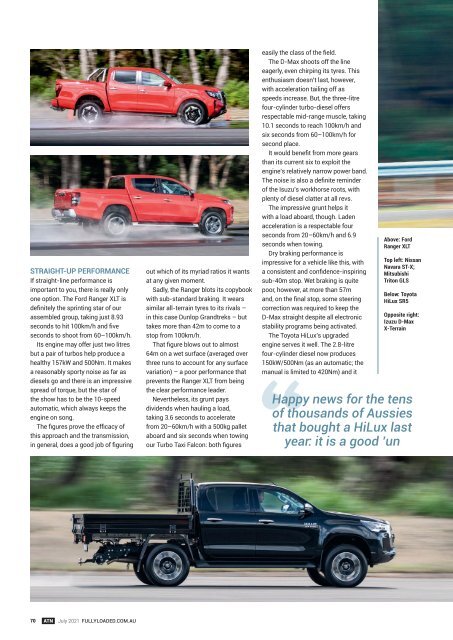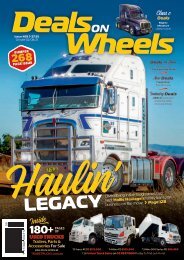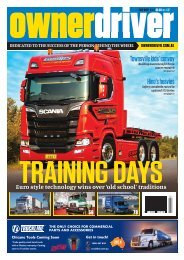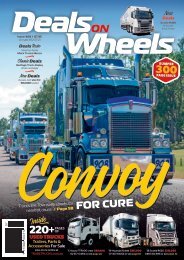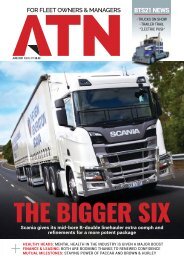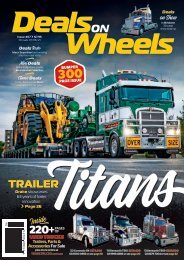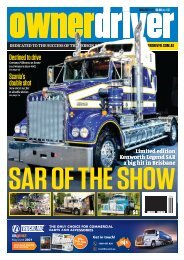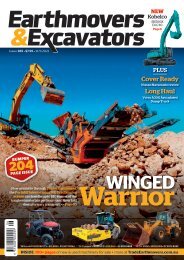Create successful ePaper yourself
Turn your PDF publications into a flip-book with our unique Google optimized e-Paper software.
STRAIGHT-UP PERFORMANCE<br />
If straight-line performance is<br />
important to you, there is really only<br />
one option. The Ford Ranger XLT is<br />
definitely the sprinting star of our<br />
assembled group, taking just 8.93<br />
seconds to hit 100km/h and five<br />
seconds to shoot from 60–100km/h.<br />
Its engine may offer just two litres<br />
but a pair of turbos help produce a<br />
healthy 157kW and 500Nm. It makes<br />
a reasonably sporty noise as far as<br />
diesels go and there is an impressive<br />
spread of torque, but the star of<br />
the show has to be the 10-speed<br />
automatic, which always keeps the<br />
engine on song.<br />
The figures prove the efficacy of<br />
this approach and the transmission,<br />
in general, does a good job of figuring<br />
out which of its myriad ratios it wants<br />
at any given moment.<br />
Sadly, the Ranger blots its copybook<br />
with sub-standard braking. It wears<br />
similar all-terrain tyres to its rivals –<br />
in this case Dunlop Grandtreks – but<br />
takes more than 42m to come to a<br />
stop from 100km/h.<br />
That figure blows out to almost<br />
64m on a wet surface (averaged over<br />
three runs to account for any surface<br />
variation) – a poor performance that<br />
prevents the Ranger XLT from being<br />
the clear performance leader.<br />
Nevertheless, its grunt pays<br />
dividends when hauling a load,<br />
taking 3.6 seconds to accelerate<br />
from 20–60km/h with a 500kg pallet<br />
aboard and six seconds when towing<br />
our Turbo Taxi Falcon: both figures<br />
easily the class of the field.<br />
The D-Max shoots off the line<br />
eagerly, even chirping its tyres. This<br />
enthusiasm doesn’t last, however,<br />
with acceleration tailing off as<br />
speeds increase. But, the three-litre<br />
four-cylinder turbo-diesel offers<br />
respectable mid-range muscle, taking<br />
10.1 seconds to reach 100km/h and<br />
six seconds from 60–100km/h for<br />
second place.<br />
It would benefit from more gears<br />
than its current six to exploit the<br />
engine’s relatively narrow power band.<br />
The noise is also a definite reminder<br />
of the Isuzu’s workhorse roots, with<br />
plenty of diesel clatter at all revs.<br />
The impressive grunt helps it<br />
with a load aboard, though. Laden<br />
acceleration is a respectable four<br />
seconds from 20–60km/h and 6.9<br />
seconds when towing.<br />
Dry braking performance is<br />
impressive for a vehicle like this, with<br />
a consistent and confidence-inspiring<br />
sub-40m stop. Wet braking is quite<br />
poor, however, at more than 57m<br />
and, on the final stop, some steering<br />
correction was required to keep the<br />
D-Max straight despite all electronic<br />
stability programs being activated.<br />
The Toyota HiLux’s upgraded<br />
engine serves it well. The 2.8-litre<br />
four-cylinder diesel now produces<br />
150kW/500Nm (as an automatic; the<br />
manual is limited to 420Nm) and it<br />
Above: Ford<br />
Ranger XLT<br />
Top left: Nissan<br />
Navara ST-X;<br />
Mitsubishi<br />
Triton GLS<br />
Below: Toyota<br />
HiLux SR5<br />
Opposite right:<br />
Izuzu D-Max<br />
X-Terrain<br />
Happy news for the tens<br />
of thousands of Aussies<br />
that bought a HiLux last<br />
year: it is a good ’un<br />
70 <strong>ATN</strong> July 2021 FULLYLOADED.COM.AU


